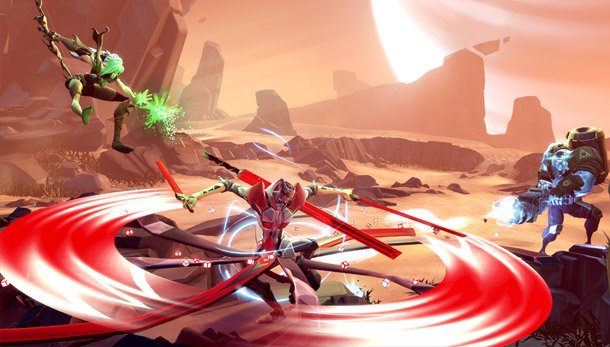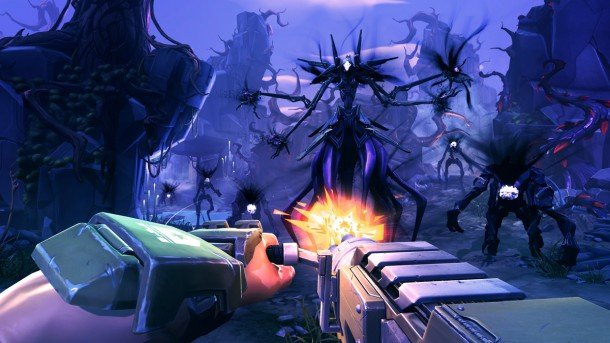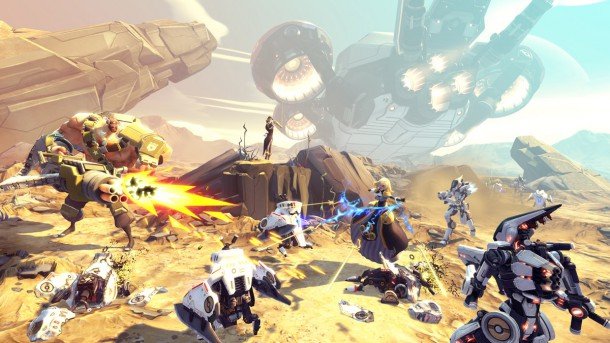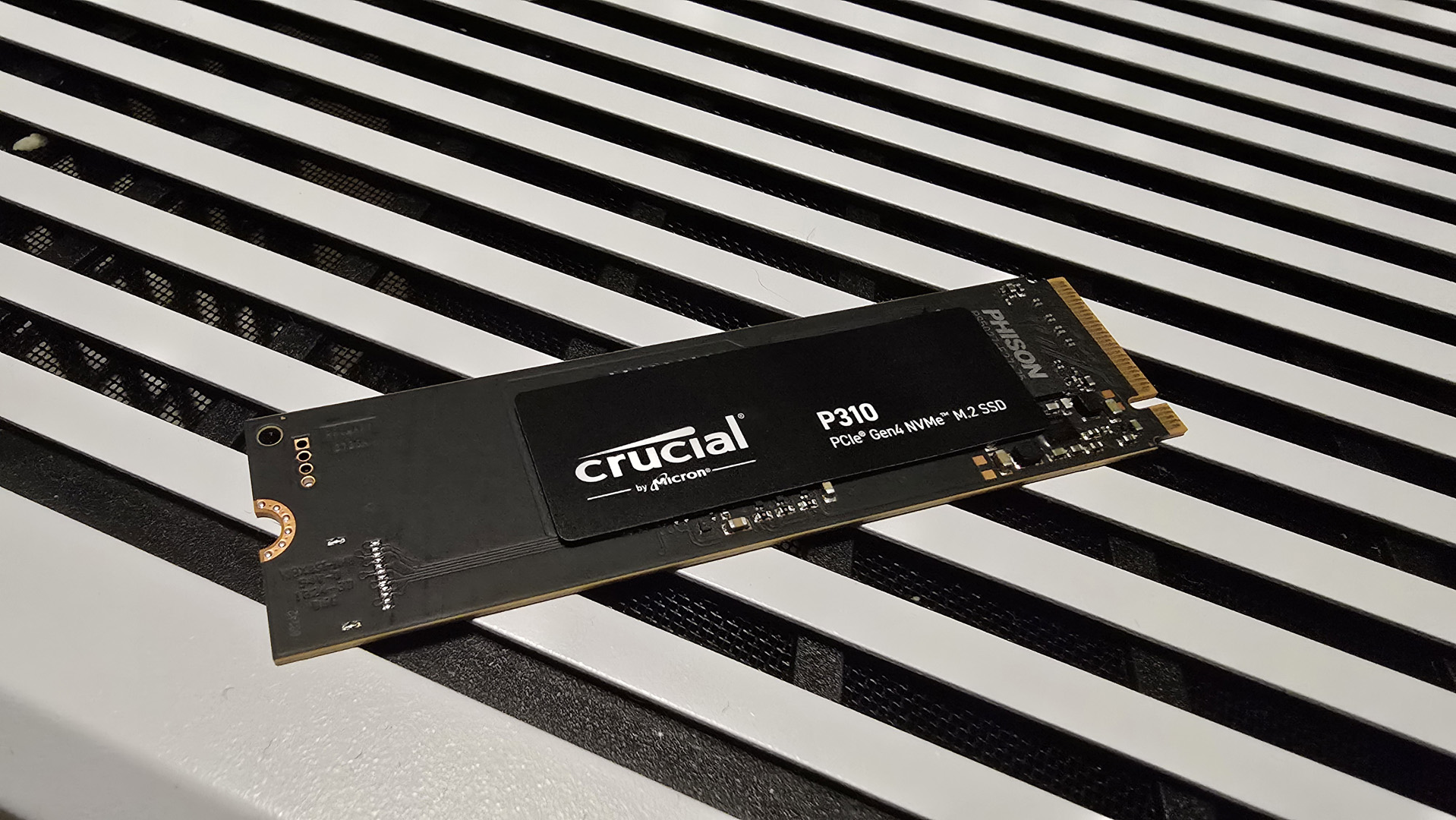Battleborn preview: a first-person MOBA with a side of Borderlands

Gearbox doesn't want to call Battleborn a first-person MOBA, but that's exactly what its competitive multiplayer Incursion mode looks like.
Two teams of five characters with different abilities fight across a map with several lanes. Each character, or Battleborn, has unique abilities that can be upgraded as it earns experience from fighting other players or NPC "creeps." While you'll earn permanent gear and rewards that are tied to your account, each character's core abilities and level is reset with every match.
Gearbox calls it a "hero shooter," which is meant to emphasize that Battleborn relies heavily on a large, varied roster of characters that play significantly different from one another. The strategies that emerge by bringing these characters' unique abilities to the same battlefield is what defines Battleborn and sets it apart from other shooters. Its dedication to being a shooter first and foremost sets it apart from other MOBAs.
As each team tried to make its way to the enemy team's base and destroy it, I started to see how the different abilities clashed in interesting ways. When Montana, a tall pile of muscles with a tiny head, unleashed all hell with his gatling gun, the aristocratic robot Marquis hit him with a time dilation ability that slowed everything down within a certain radius, and sniped him in the head. Thorn, a nimble archer, leapt over confrontations, changed direction midair to avoid damage, and landed in a flanking position.
Each time you gain a level, you pick one out of two upgrades from the helix menu, which is a really smart, easy way to handle character customization in the middle of combat. Oscar Mike a straightforward, space marine-type character, got to choose between a red dot sight and scope for his rifle early on in the match. It's not about which is better, only how you'd prefer to play.
The permanent progression doesn't make your character inherently more powerful, but instead unlocks more and more ways to play by earning "mutations" that introduce different binary choices to the helix menu.

Battle quirks
A first-person shooter's personality usually comes from the environment and the guns you're using, but leaves you with a hollow avatar, especially in multiplayer shooters. In Battleborn, every choice, gun, ability, and line your character says reinforces its unique personality and play style.
The biggest gaming news, reviews and hardware deals
Keep up to date with the most important stories and the best deals, as picked by the PC Gamer team.
Montana's melee attack is just a flick of his giant finger, which is an especially funny way to finish off an enemy. Marquis, by contrast, slaps his enemies in the face with good manners, as if inviting them to a duel. He can also pull a mechanical owl out of his bowler hat, which patrols an area until it finds an enemy to fly into and explode, unless he's shot out of the air first.
Every character has these kinds of expressive animations and abilities, and Battleborn has no qualms about switching to the third person to give you a better view. This helps establish character, and serves gameplay as well. Rath, for example, a lanky, dour sword fighter, has a special spin attack, which you could only execute properly in third person.
Gearbox has announced nine characters but says that it hopes to expand on that number indefinitely, both in the initial retail release and future DLC. As you can imagine, and as Valve and Riot would probably tell us, balancing dozens of characters is a daunting commitment of a type that Gearbox never faced before. Design Director John Mulkey was surprisingly cavalier about it. He said that Gearbox "basically solved" the balance issue with a system that breaks down every character to an abstracted numerical value, which can then be tweaked. More importantly, as Art Director Scott Ketser told me, Gearbox wants the challenge of having to constantly balance Battleborn, because the alternative is that nobody's playing it.

Seeing these characters come together in the competitive multiplayer Incursion mode was hectic and entertaining. Everything in Battleborn, even the explosion and smoke effects, retains the kind creative energy and handmade feel that we see in a lot of concept art for games, but that rarely makes it into the final product. It easily switches from dark and gloomy corridors to bright and vibrant alien forests, and thrives on the kind of flexible reality that allows for Montana's impossible tiny head, mushroom ninjas, and robots with monocles.
Borderlands reborn
In the game's campaign cooperative mode too, you level up from scratch for each mission, but instead of taking on another team, you and four buddies are fighting hordes of enemies. In the mission I saw, the five players went to the space gothic-themed planet Tempest to harvest star shards, a valuable currency in the universe. Tempest, while conceptually interesting, looked very bare compared to the lush multiplayer level I saw.
I'm not sure I'm sold on Battleborn's competitive multiplayer, but at least it looked different and interesting. The cooperative campaign mission, on the other hand, seriously made me wonder why it's not just another Borderlands game. With the exception of the progression system, it looked the same.
I saw big, open areas, tons of different enemies, and in the end, a hulking spider robot boss that absorbed many minutes of relentless attacks. The key to success was crowd management, supporting other players with heals and tanking, and endurance. Even the way the story was delivered was identical to Borderlands, mostly with radio chatter from supporting NPCs.
It looked like fun in the same way that Borderlands is fun, minus the loot, which left me jonesing for a new Borderlands more than it did Battleborn.

It also left me wondering what ties the different missions together, and what ties the cooperative and competitive multiplayer modes. Gearbox wasn't ready to talk about that, or if the game will have any single player content, though it certainly didn't sound like a high priority.
Gearbox showed me what happens in a shooter that embraces whatever weird idea for an ability or character comes to mind, rather than trying to create perfectly symmetrical teams. From art direction, to writing, and design, the impression I got was that the studio is allowing unrestrained creativity to lead the way.
It's admirable, and I liked what I saw, but so far Gearbox hasn't explained how all this creativity comes together to form something that, in cooperative mode, is meaningfully different from Borderlands, and in multiplayer, more ambitious than other mashup concepts (like Gigantic and Smite) meant to emulate the success of Dota 2 and League of Legends. The battles themselves looked fun, but Battleborn's long-term appeal will depend on its account-level, persistent progression hooks, which I haven't seen enough of yet.

